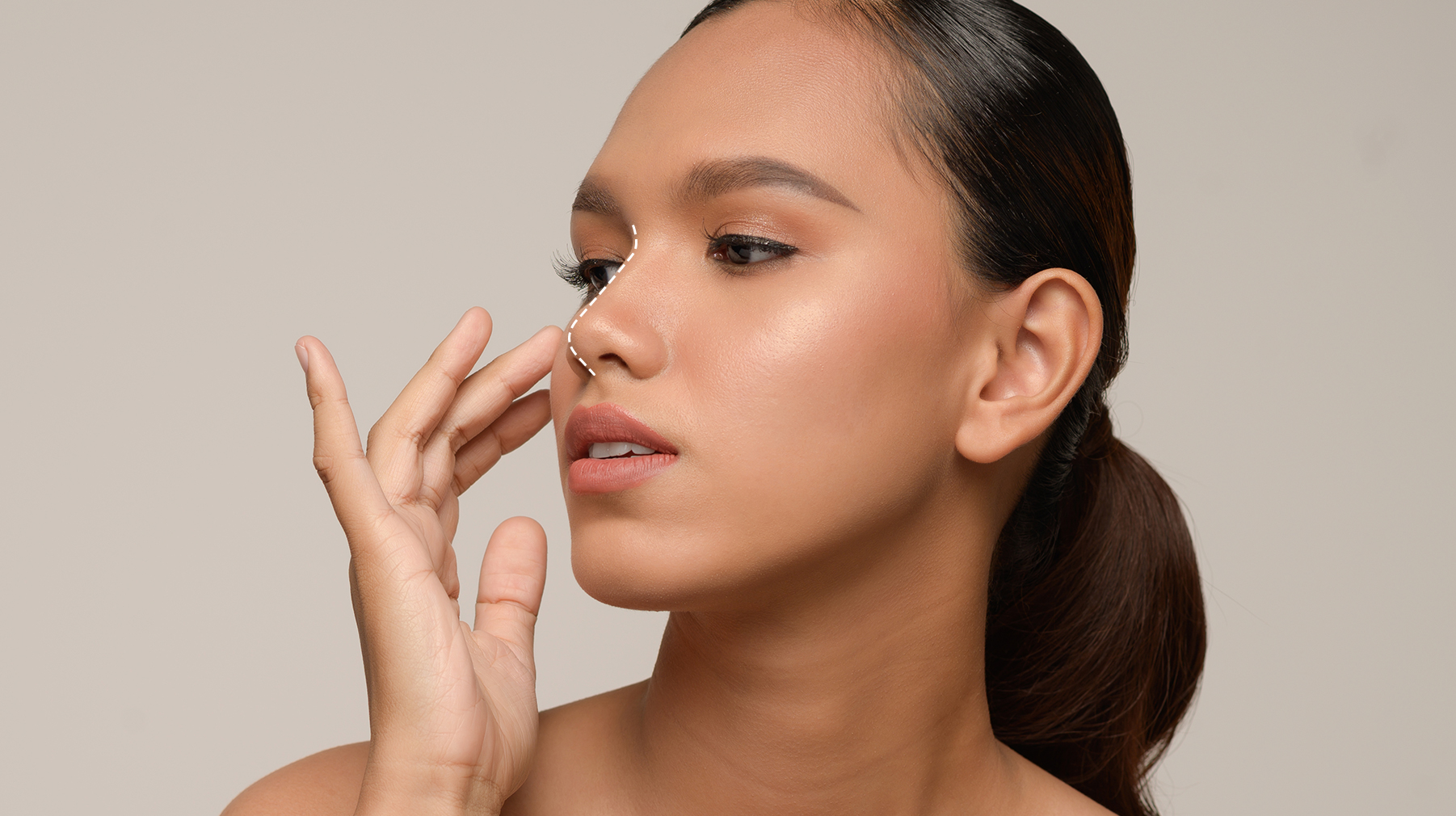Rhinoplasty is often associated with cosmetic enhancements such as reshaping the nose for aesthetic purposes. However, this surgical procedure can also address functional issues, particularly breathing problems. Find out more about it here!
What Causes Breathing Problems?
Breathing problems can stem from various structural abnormalities within the nose, including:
- Deviated Septum: This occurs when the wall (septum) between the nasal passages is displaced to one side, causing obstruction and difficulty breathing.
- Nasal Valve Collapse: The nasal valve is the narrowest part of the nasal airway, and its collapse can significantly restrict airflow.
- Turbinate Hypertrophy: Turbinates are structures within the nasal cavity that help filter and humidify the air we breathe. When these become enlarged, they can obstruct airflow.
- Nasal Polyps: These are noncancerous growths that can block the nasal passages and cause breathing difficulties.
How Can Rhinoplasty Help Improve Breathing?
Functional rhinoplasty focuses on improving the nasal airway to alleviate breathing problems. Here are some ways rhinoplasty can address specific issues:
- Correcting a Deviated Septum: A procedure called septoplasty is often performed in conjunction with rhinoplasty to straighten the septum, thus opening the nasal passages and improving airflow.
- Repairing Nasal Valve Collapse: Surgeons can reinforce the nasal valve area with grafts to prevent collapse and maintain an open airway.
- Reducing Turbinate Size: Surgeons can perform a turbinate reduction, removing or reshaping the turbinates to allow for better airflow.
- Removing Nasal Polyps: During rhinoplasty, nasal polyps can be removed to clear the nasal passages and enhance breathing.
There are other benefits, including providing relief from chronic headaches and even increasing exercise tolerance!
It is also important to note that there are many kinds of cosmetic surgeons who do rhinoplasty for aesthetic purposes but not everyone is trained in Functional Rhinoplasty. “In general, otolaryngologists who subspecialized in Facial Plastic Surgery are the most adept rhinoplasty surgeons to do this kind of specific procedure. This can improve both the appearance of the nose as well as the patient’s nasal breathing,” says Dr. Grace Rojo-Tan, ENT-Head & Neck Surgery Specialist and facial plastic & rhinoplasty surgeon of Belo. “In Belo, all of our rhinoplasty surgeons are also board-certified otolaryngologists!”
The Surgical Process
Functional rhinoplasty usually involves the following steps:
- Consultation and Examination: The surgeon will assess the patient’s nasal structure and breathing issues. This may include a physical examination and imaging tests. Based on the assessment, the surgeon will develop a tailored surgical plan to address the specific structural issues causing breathing problems.
- Surgery: Rhinoplasty is typically performed under general anesthesia. The surgeon makes incisions inside the nostrils or across the columella (the tissue between the nostrils) to access the underlying structures. Depending on the issues being addressed, the surgeon may remove, reshape, or reposition bone and cartilage.
- Recovery: Post-operative care includes managing swelling, avoiding strenuous activities, and following the surgeon’s instructions to ensure proper healing. Full recovery can take several weeks to months. (Read more here: 9 Questions About Getting A Nose Job You’ve Always Wanted to Know)
What Should You Consider Before Getting Rhinoplasty?
- Risks and Complications: As with any surgery, there are risks, including infection, bleeding, and complications related to anesthesia.
- Choosing a Qualified Surgeon. It’s crucial to select a board-certified plastic surgeon that is at the same time an otolaryngology specialist with experience in functional rhinoplasty. This is to ensure the best outcome.
- Recovery Time: Recovery can be a lengthy process, requiring patience and adherence to post-operative care guidelines.
Conclusion
Rhinoplasty is not just a cosmetic procedure. It can play a significant role in addressing and correcting structural issues that cause breathing problems. If you are experiencing chronic nasal obstruction or difficulty breathing, a consultation with a Belo surgeon can help. S/he will determine if functional rhinoplasty is a suitable option for you. By addressing both aesthetic and functional concerns, rhinoplasty can improve not only the appearance of the nose but also the quality of life through better respiratory function!
Our Belo doctors can best recommend treatments or a skincare regimen for you. We have clinics located around Metro Manila, Pampanga, Cebu and Davao! Give us a call at 8819-BELO (2356) or book your appointment here.
Please note that prices may change without prior notice and the final price will be based on the doctor’s quotation upon consultation.
